Visa workers are helping reach critical tree planting goals here in Maryland, thousands of miles from where they were born
The Healthy Forests Healthy Waters program enlists help from Central American workers in its tree planting efforts
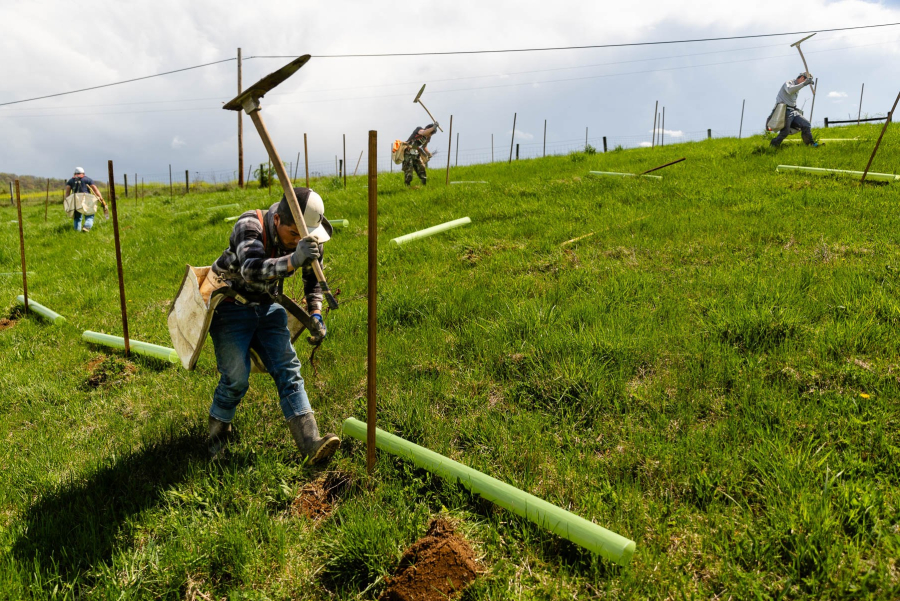
As the most expansive tree-planting effort in Maryland, the Healthy Forests Healthy Waters program has a lot of work on its hands. Between 2014–2020, the collaborative effort between the Alliance for the Chesapeake Bay, Maryland Forest Service and Maryland Forestry Foundation planted a total of 555 acres of forest on the property of participating landowners. And in 2020, the program received funding from the Department of Natural Resources Trust Fund Grant to plant an additional 208 acres.
To get this many trees in the ground, the program enlists the help of contracted migrant workers who are able to work on an H-2A visa status. Working all along the East Coast, these expert foresters are critical to meeting ambitious tree planting goals designed to improve the health of streams and rivers throughout the Bay watershed.
Erly Martinez, one of the contracted workers who is the lead of the crew, has been participating in this program for the last 14 years. Originally from Guatemala, Martinez loves what he does every day. He spends every October–May leading a team that aims to plant approximately 3,000 trees per day in locations from North Carolina all the way to New York. During the summer months, he is able to return to his family in Guatemala.
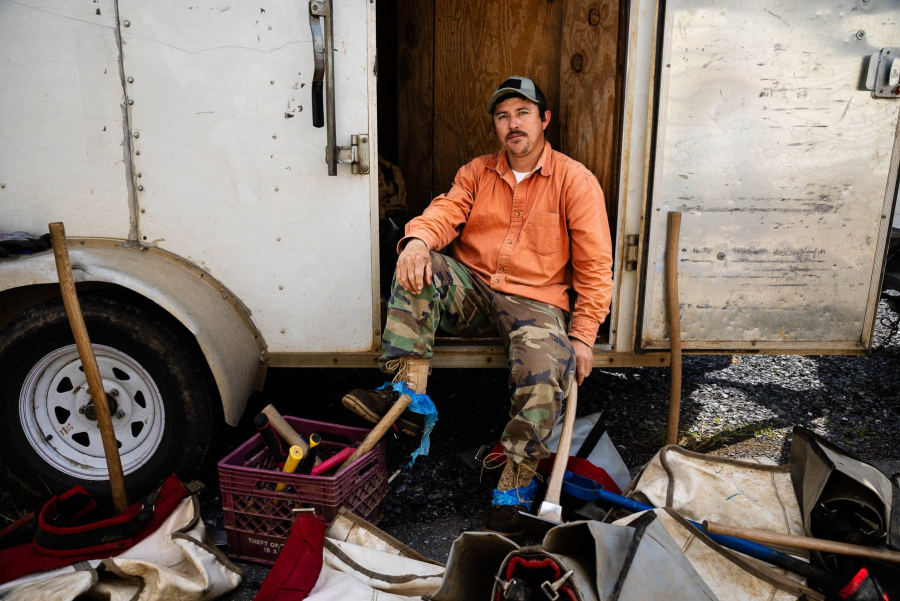
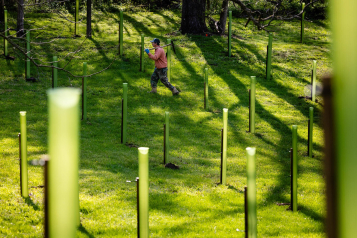
Martinez feels strongly that planting trees helps produce cleaner water in rivers and streams that feed into the Chesapeake Bay. He explains that when the roots of the trees grow and expand throughout the soil they prevent sediment from reaching the water and absorb nutrients that would otherwise pollute waterways.
“We’re planting the trees to clean the water and create a better future and build a better chance at air survival,” Martinez said, translated from Spanish.
The crew visits multiple privately owned sites every day to plant trees, and heavily contributes to Maryland’s statewide goal of planting five million trees per year. Martinez and his crew are able to plant about 90,000–100,000 trees per month, amounting to about one-fifth of the overall goal. During the eight months of the year that the crew is able to work, they spend practically all their time together. They live together, cook meals together and work together.
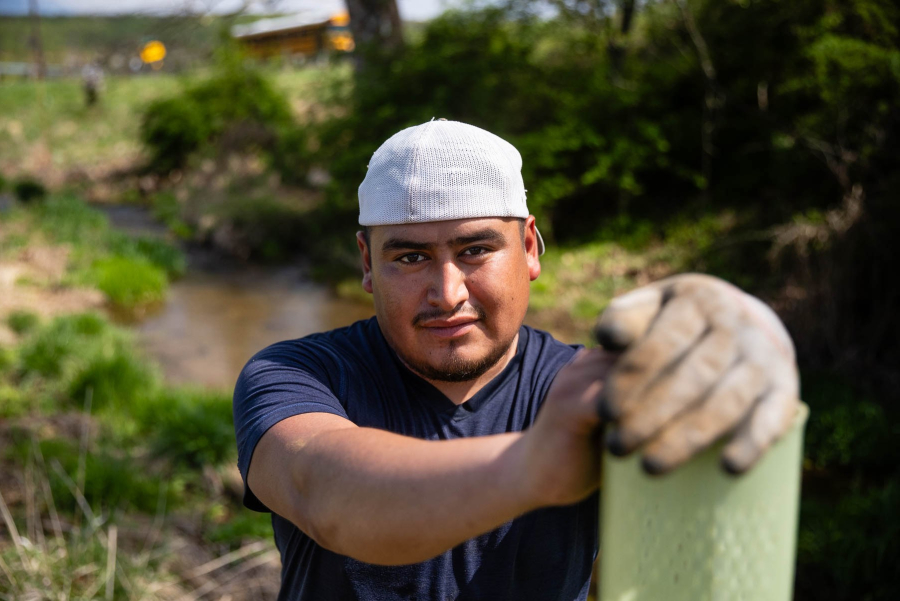
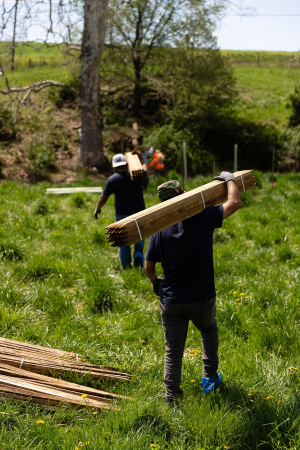
Helder Castillo, one of the crew members who has spent thirteen years working with this program, said that the friendly relationship he has with his team members is his favorite part of the job.
“I like living with everyone in the hotel,” Castillo said. “We like to have fun and when we’re not working, we like to go out together.”
While there are multiple tree planting projects taking place that are supported by volunteers, Craig Highfield, the forests program director for the Alliance for the Chesapeake Bay, said that the visa workers are crucial to making sure this project gets completed.
“These visa workers really deserve our appreciation and respect,” Highfield said. “Our reforestation work just couldn’t get implemented without them.”
While Highfield recognizes that working with volunteer tree planters is important for engaging the community and building awareness, he said that his team typically doesn’t use them for larger projects with hundreds of trees.
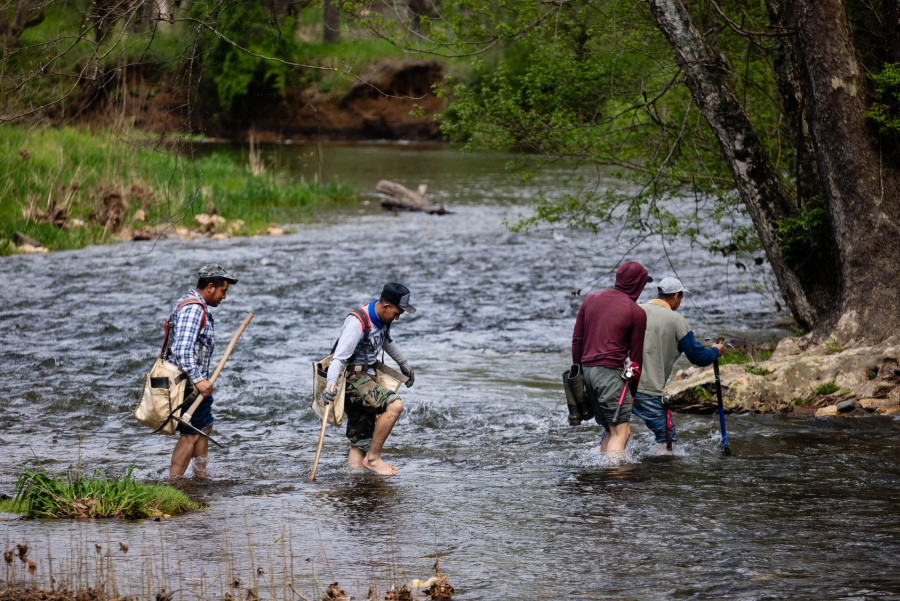
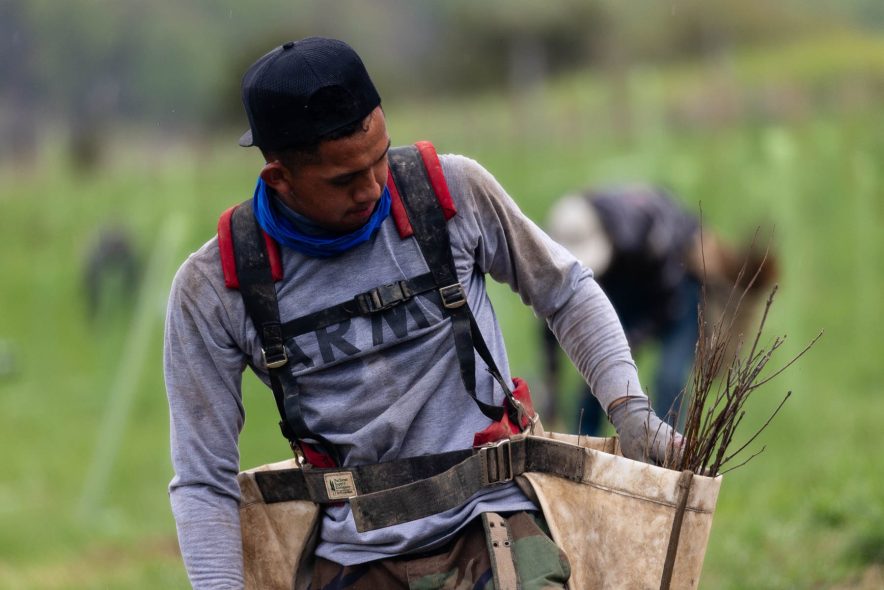
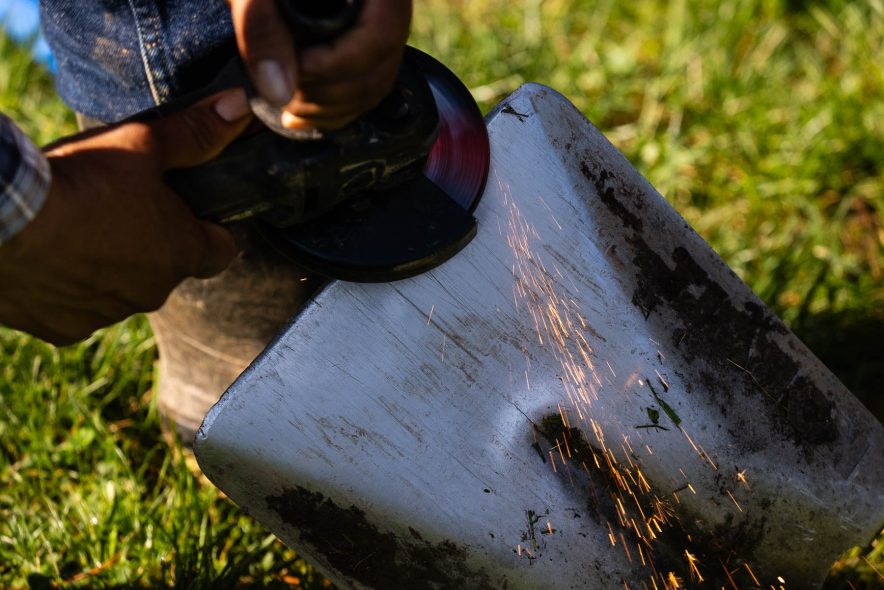
The group of tree planters start at their first site early in the morning while it's still cool out, generally working in spring and fall. Depending on the size of the sites, they can usually get to around five per day. At lunchtime, they break out portable grills and stovetops to cook homemade meals, typically consisting of traditional Central American cuisine, often rotating who does the cooking. After lunch, the group typically finishes up with one or two more sites.
Like Martinez, many of the crew members return to their home countries to be with family and friends during the summer months, although some of them stay together in the United States and are employed by other companies working on electrical lines.
As initiatives like the Healthy Forests Healthy Waters program work toward ambitious forestry goals, dedicated visa workers like Erly Martinez and his crew ensure the program's success. Martinez and his team exemplify how individuals from diverse backgrounds can come together to make a difference in environmental conservation.
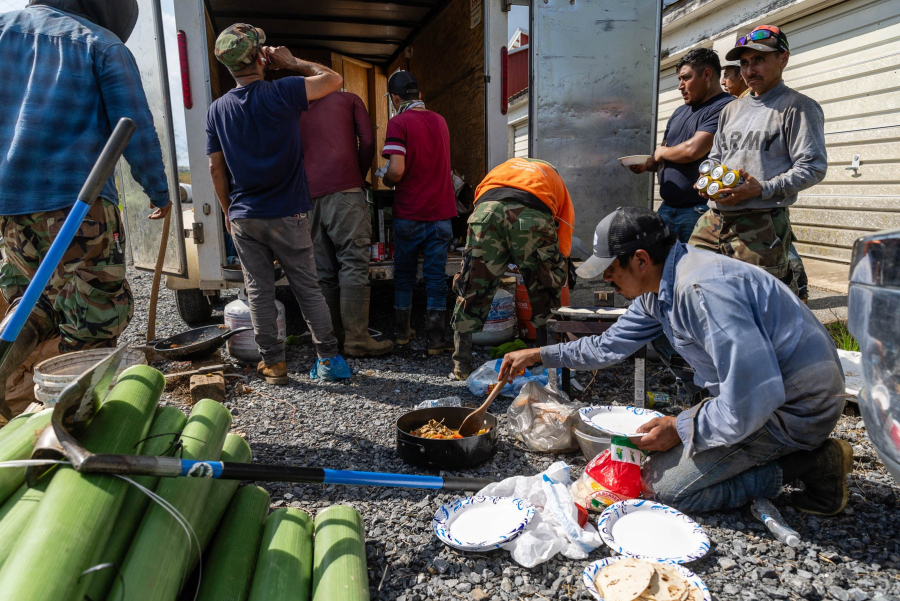
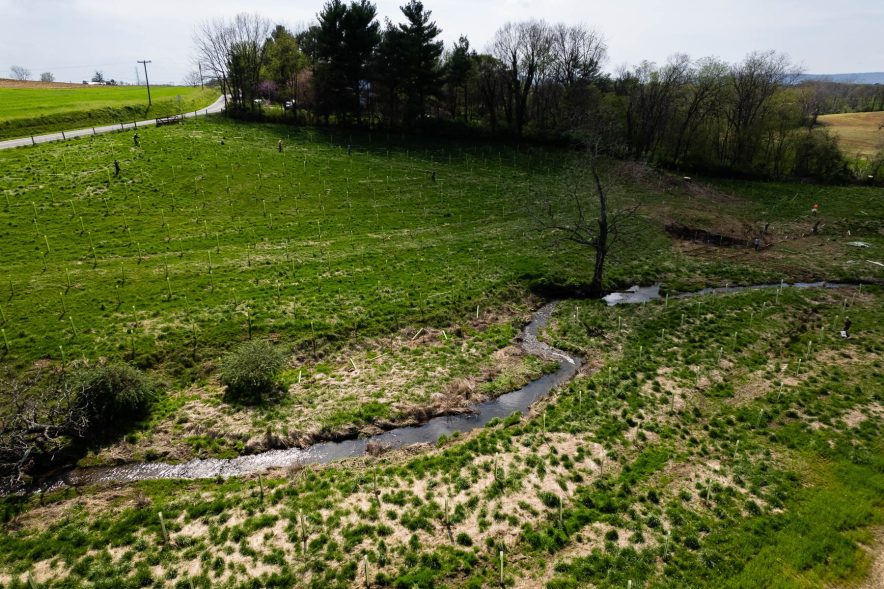
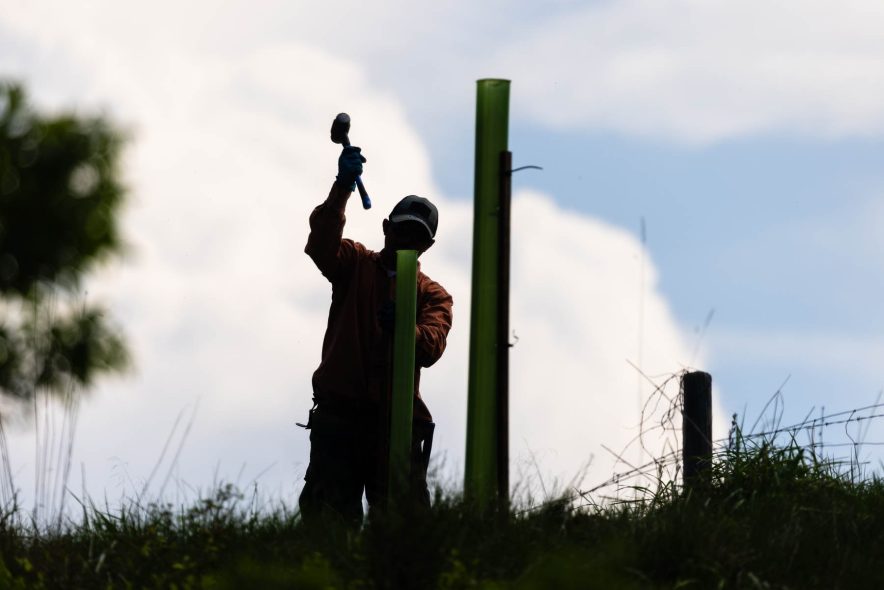
Los trabajadores con visa son ayudando a alcanzar objetivos críticos de plantación de árboles aquí en Maryland, a miles de kilómetros de donde nacieron
El programa Bosques Saludables Aguas Saludables busca ayuda de trabajadores centroamericanos en su esfuerzo de plantación de árboles
Como el esfuerzo de plantación de árboles más amplio en Maryland, el programa Healthy Forest Healthy Waters tiene mucho trabajo que hacer. Entre 2014 y 2020, el esfuerzo de colaboración entre la Alianza para la Bahía de Chesapeake, el Servicio Forestal de Maryland y la Fundación Forestal de Maryland plantó un total de 555 acres de bosque en propiedad de los propietarios participantes. Y en 2020, el programa recibió fondos de la subvención del Fondo Fiduciario del Departamento de Recursos Naturales para plantar 208 acres adicionales.
Para plantar tantos árboles, el programa solicita la ayuda de trabajadores migrantes contratados que puedan trabajar con un estatus de visa H-2A. Trabajando a lo largo de la costa este, estos expertos forestales son fundamentales para cumplir los ambiciosos objetivos de plantación de árboles diseñados para mejorar la salud de los arroyos y ríos en toda la cuenca de la Bahía.
Erly Martinez, uno de los trabajadores contratados que lidera el equipo, ha estado participando en este programa durante los últimos 14 años. Originalmente de Guatemala, Martínez ama lo que hace todos los días. Pasa cada octubre a mayo liderando un equipo que tiene como objetivo plantar aproximadamente 3000 árboles por día en lugares desde Carolina del Norte hasta Nueva York. Durante los meses de verano, puede regresar con su familia en Guatemala.
Martínez cree firmemente que el trabajo que realiza su equipo con la plantación de árboles ayuda a producir agua más limpia en los ríos y arroyos que desembocan en la Bahía de Chesapeake. Explica que cuando las raíces de los árboles crecen y se expanden por el suelo impiden que los sedimentos lleguen al agua y absorban nutrientes que de otro modo contaminaría los cursos de agua.
Martinez dice “lo que estamos haciendo es plantando los árboles para limpiar el agua y para hacer un futuro mejor en el agua y tener una sobrevivencia por el aire.”
El equipo visita varios sitios de propiedad privada todos los días para plantar árboles y contribuye en gran medida al objetivo estatal de Maryland de plantar cinco millones de árboles por año. Martínez y su equipo pueden plantar entre 90.000 y 100.000 árboles por mes, lo que representa aproximadamente 1/5 del objetivo general. Durante los ocho meses del año que la tripulación puede trabajar, pasan prácticamente todo el tiempo juntos. Viven juntos, cocinan juntos y trabajan juntos.
Helder Castillo, uno de los tripulantes que lleva trece años trabajando en este programa, dice que la relación amistosa que tiene con los miembros de su equipo es su parte favorita del trabajo. “[mi parte favorito] es vivir con los compañeros y trabajando en grupo…nos gusta divertirnos cuando no trabajamos,” dice Castillo.
Aunque hay múltiples proyectos de plantación de árboles encabezados por voluntarios, Craig Highfield, director del programa forestal de la Alianza para la Bahía de Chesapeake, dice que los trabajadores con visas son cruciales para garantizar que este proyecto se complete. Highfield dice: “Estos trabajadores con visas realmente merecen nuestro aprecio y respeto. Nuestro trabajo de reforestación simplemente no podría implementarse sin ellos”.
Aunque Highfield reconoce que trabajar con plantadores de árboles voluntarios es importante para involucrar a la comunidad y crear conciencia, dice que normalmente no los utilizan para proyectos más grandes con cientos de árboles.
El grupo de plantadores de árboles comienza en su primer sitio temprano en la mañana, cuando aún hace frío, y generalmente trabaja en primavera y otoño. Dependiendo del tamaño de los sitios, normalmente pueden llegar a hacer alrededor de cinco por día. A la hora del almuerzo, utilizan parrillas y estufas portátiles para cocinar comidas caseras, que generalmente consisten en cocina tradicional centroamericana, y a menudo rotan quién cocina. Después del almuerzo, el grupo normalmente termina con uno o dos sitios más.
Al igual que Martínez, muchos de los miembros de la tripulación regresan a sus países de origen para estar con familiares y amigos durante los meses de verano, aunque algunos de ellos permanecen juntos en los Estados Unidos y son empleados de otras empresas que trabajan en líneas eléctricas.
A medida que iniciativas como el programa Bosques Saludables Aguas Saludables trabajan hacia objetivos forestales ambiciosos, trabajadores dedicados con visas como Erly Martínez y su equipo garantizan el éxito del programa. Martínez y su equipo ejemplifican cómo personas de diversos orígenes pueden unirse para marcar la diferencia en la conservación del medio ambiente.

Comments
There are no comments.
Thank you!
Your comment has been received. Before it can be published, the comment will be reviewed by our team to ensure it adheres with our rules of engagement.
Back to recent stories